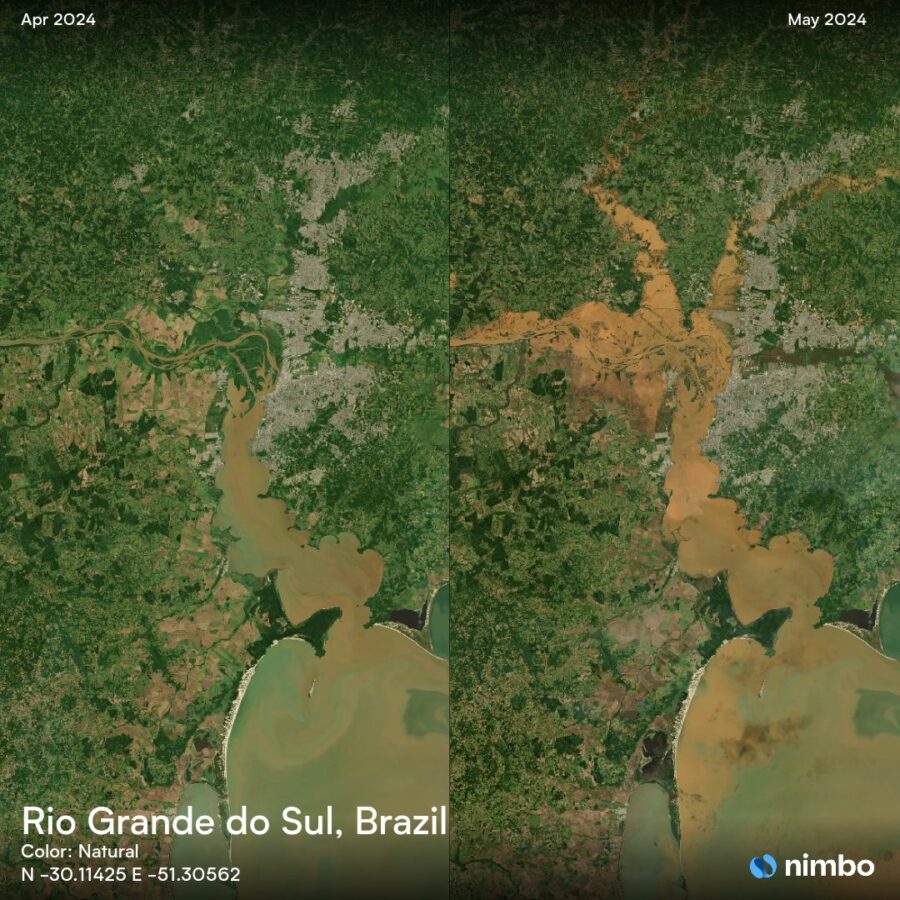
2024 Rio Grande do Sul floods
Satellite view of Porto Alegre
Porto Alegre, capital of Rio Grande do Sul, experienced tragic events between the end of April and the beginning of May. Intense rains flooded the Brazilian region which suffered heavy human, material and agricultural losses.
But the area is also known to be prone to natural disasters : in 1941, episodes of heavy flooding occurred in the city with 22 days of intense rain and wind. The water level surrounding Porto Alegre, like the Rio Guaíba, had reached 4.76 meters (compared to an average of around 2 meters usually). A surge which has recurred in 2023 due to the warming of the atmosphere and the increased probability of extreme rains.
But last month’s episode reached completely new levels.Consequences on Rio Grande do Sul
On April 28, 2024, torrential rains began to fall on the state of Rio Grande do Sul. Cities in the region have suffered a tragic human toll and significant material damage. The Gaúchos were also rationed on drinking water for several days after the closure of four of the city’s six water treatment plants following the disaster.
The economic situation of Rio Grande do Sul is in danger as well: the agricultural state is the country’s leading rice producer and accounts for around 20% of Brazilian GDP. With the flooding of fields, the loss of agricultural equipment and the shutdown of production chains, the repercussions will be nationwide.
Brazil hit by El Niño and global warming
The city of Porto Alegre has experienced the largest temperature variation among Brazilian capitals during the year 2024 so far, a situation that echoes the climate emergency facing Brazil and the rest of the world.
For several decades, scientists have been warning about rising ocean temperatures. This warming leads to increased evaporation and an elevation in humidity levels in the atmosphere, causing rain-packed clouds to appear.
Added to this is the El Niño phenomenon, a climatic anomaly in the circulation of coastal currents which corresponds to an abnormal warming of the surface waters of the tropical Pacific.
In South America, the effects of El Niño are more pronounced in winter and spring with heavy rains, while on the other side of the planet, Australia faces intense droughts.
This phenomenon used to be appreciated by farmers thanks to the abundant precipitation which supplied these regions with bearable quantities of rain. But the intensity of the rains is now causing floods and is aggravated by very strong winds, sometimes preventing any harvest and endangering the inhabitants of southern Brazil.
Nimbo Earth Online with modified Copernicus Sentinel data (2023-2024)
